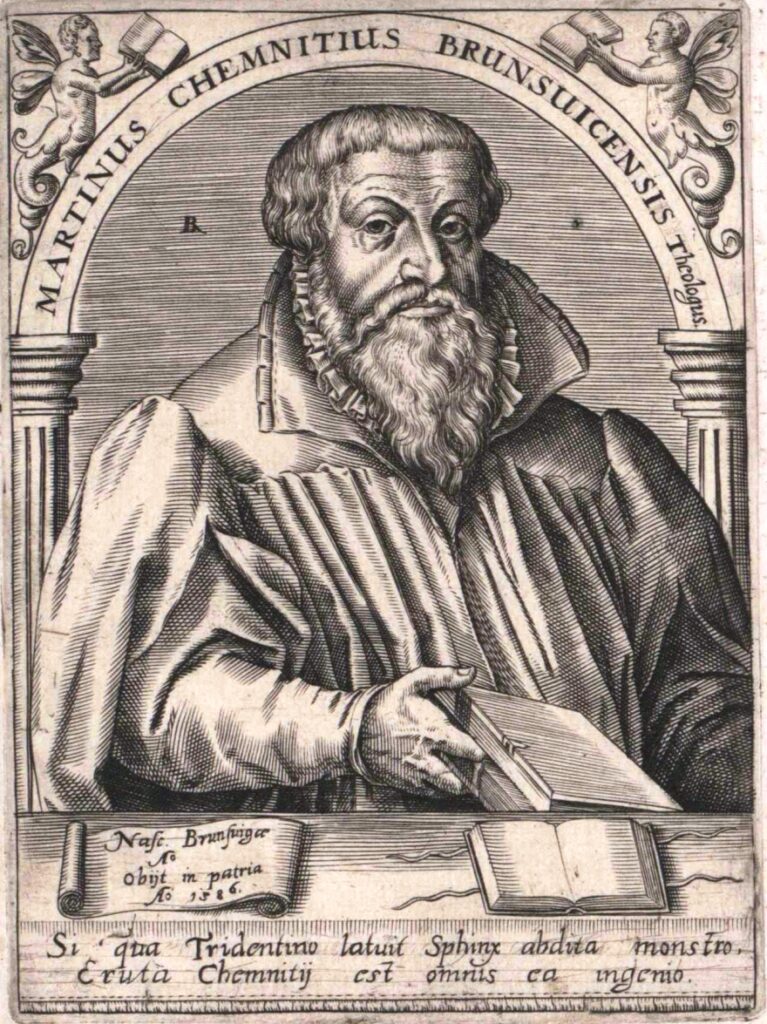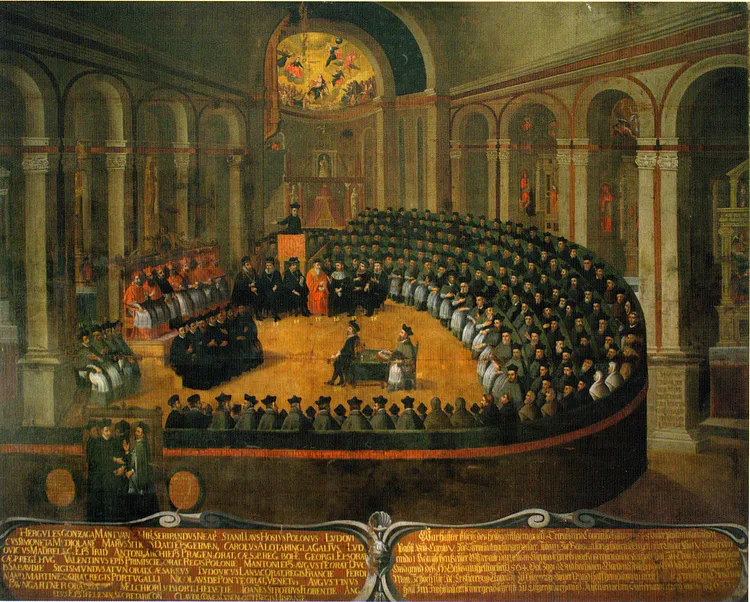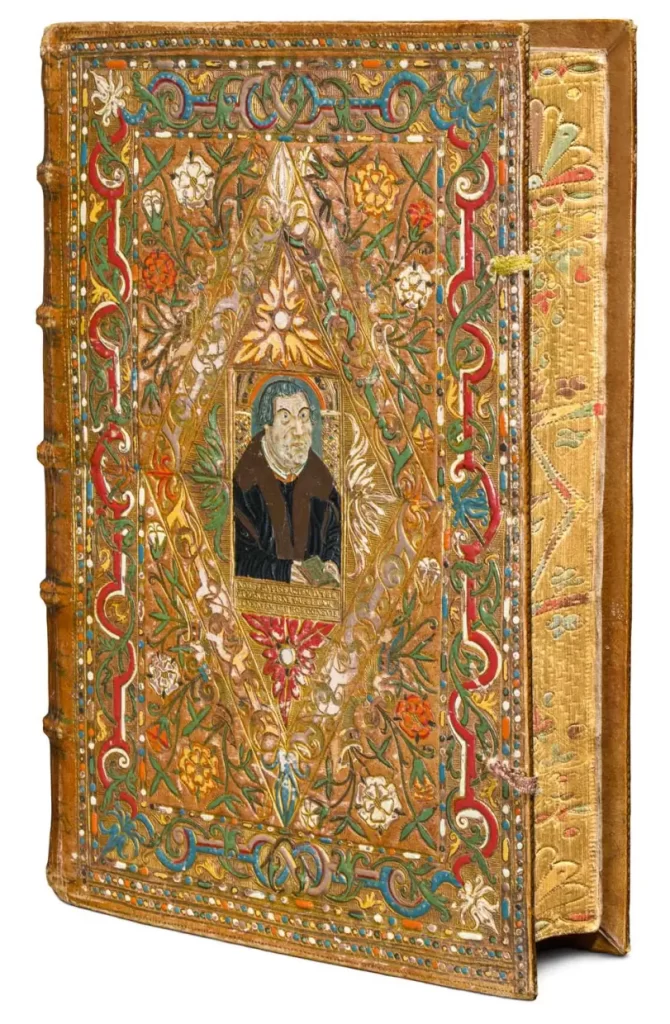The Second Martin

St. Martin Chemnitz, whose day the Church celebrates on his birthday of November 9th, was a leading German theologian of the Reformation. Second to Martin Luther—hence his nickname, the “second Martin”—Chemnitz worked closely with the reformer and also with Philipp Melanchthon during the mid-sixteenth century.
Born in 1522 in Brandenburg, St. Martin Chemnitz was the youngest of three children. He became a weaver’s apprentice in his teenage years, running his family’s clothing business. When he was a little older, around 20, he continued his education at the University of Frankfurt and then the University of Wittenberg, where he was a student of Luther and Melanchthon.
After moving to Königsberg (modern-day Kaliningrad), Chemnitz was employed by Albert, Duke of Prussia, and became the court librarian for the Königsberg State and University Library. It was there that Chemnitz had full access to the library’s content and dedicated himself completely to theological and academic study.
He read through the Bible in the original languages of Hebrew and Greek, studied the early Church fathers, and thought about current theological issues. In 1553, Chemnitz returned to Wittenberg at Melanchthon’s behest and entered the pastoral office. He also joined the Wittenberg theological faculty and began to lecture on Reformation theology. Eventually he accepted a call to be the coadjutor (or co-bishop) of Braunschweig and pastor of St. Martin’s Church there. He later served as superintendent (like a denominational president) in Braunschweig, a position that he held until his retirement, at age 62, which preceded his death on April 8th, 1586.
After his move from Wittenberg he also helped create the Formula of Concord, a confessional document that attempted to bring doctrinal agreement to different factions of German Lutherans. Throughout his career, he staunchly defended distinctively Lutheran teachings, such as the real presence of Christ’s body and blood in the Eucharist and the pure teaching of the two natures of Christ.
His work on these issues led him to be instrumental in publishing the Book of Concord, published in 1580 and containing a series of important confessional documents, treatises, commentaries, and catechisms that has served ever since as a doctrinal standard of orthodox Lutheran churches.

A Brief History
For this reason, many view Chemnitz as one of the leading figures of Reformation history and one of the most intellectually gifted theologians in Lutheran history. Without Chemnitz unifying the Church in the years after the “first Martin’s” death, the various (but false) interpretations of Luther’s doctrine that were circulating at the time would have been potent enough to bring down the entire work of the Reformation.

Chemnitz served the Church tirelessly throughout as he attempted to preserve and make improvements on the work begun by his contemporaries and those gone before him. Chemnitz built upon Luther and Melanchthon’s theological models and sought for their doctrine to be applied to his time. This continual project of Chemnitz is perhaps best exemplified in his work in writing of the Formula and publishing the Book of Concord.
Thus, the Church happily celebrates his day on November 9th, remembering the work he did to unify Lutheranism and codify the faith. Without the “second Martin,” the hard work and reforming actions of the “first Martin” might not have prevailed, and Lutheranism certainly would not look the way that it looks today.
Collect
O God, Who didst give Blessed Martin Chemnitz to Thy people as a minister of eternal salvation: grant, we beseech Thee, that we, who have had him for our teacher on earth, may with him enjoy Thine eternal glories; through Jesus Christ our Lord, who liveth and reigneth with Thee and the Holy Ghost: ever one God, world without end. Amen.
Lessons
Epistle
Gospel
Resources
Issues, Etc. interview with the Rev. Will Weedon on Sixteen Century Lutheran Theologian Martin Chemnitz
Propers found in Daily Divine Service Book: A Lutheran Daily Missal, edited by the Rev. Heath Curtis
References:
1. Weedon, William. Celebrating the Saints. Concordia Publishing House. 2016.
2. Hanna, Mark. “The Contribution of Martin Chemnitz to Our Lutheran Heritage.” 2004.
Images:
1. Martin Chemnitz, Robert Boissard, Austria, 1600.
2. Cardinal Ercole Gonzaga Presiding at the Council of Trent, Elia Naurizio, Italy, ca. 17th century.
3. An image of a first edition “Corpus Doctrinae, das ist Die Summa, Form und fuerbilde der reinen Christlichen Lehre, aus der heiligen Goettlichen Schrifft der Propheten und Aposteln zusammen gezogen,” edited by Martin Chemnitz.
Some links might be affiliate links which means we may receive a small commission at no extra cost to you. As an Amazon Associate we earn from qualifying purchases.



